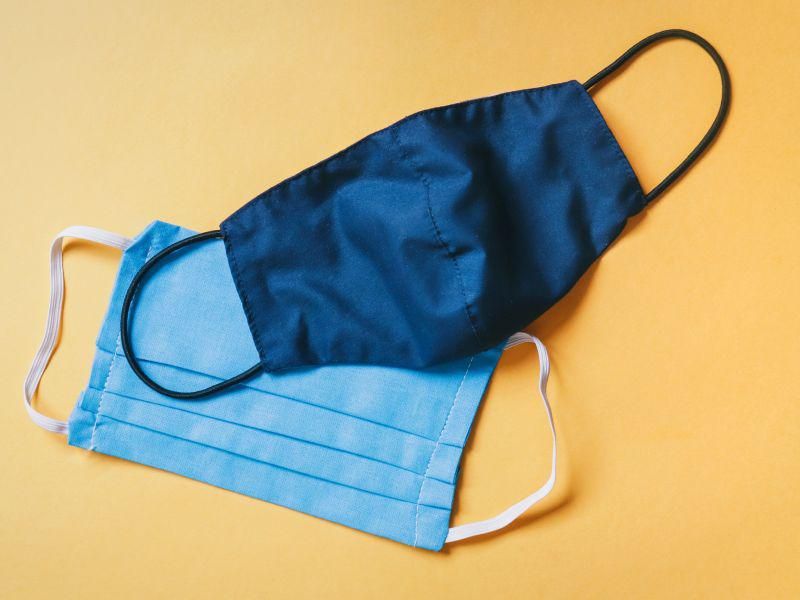WEDNESDAY, Feb. 10, 2021 (HealthDay News) — It’s known that face masks help protect against COVID-19 infection, but U.S. health officials said Wednesday that the tighter the mask, the better.
In lab experiments, wearing cloth or medical masks close to the face cut COVID transmission by 95%, according to a new report from the U.S. Centers for Disease Control and Prevention.
“These laboratory-based experiments highlight the importance of good fit to maximize overall mask performance,” wrote the researchers, led by Dr. John Brooks, of the CDC’s COVID-19 Emergency Response Team.
“There are multiple simple ways to achieve better fit of masks to more effectively slow the spread of COVID-19,” the researchers noted.
Using dummies, the CDC team tested two methods to prevent air leakage from the mask’s edges: double masking (wearing a cloth mask over a medical mask) and knotting and tucking masks. For this, they knotted the ear loops of a medical mask at the mask edges and tucked in and flattened any extra material close to the face.
When people wear tight-fitting masks, infection could be slashed, experiments showed.
Some experts worry that double masking could discourage mask-wearing altogether.
“I would rather people focus on finding one quality mask that meets the mark, versus trying to layer masks and create discomfort, difficulty breathing … or frustration that might lead to no mask at all,” Saskia Popescu, an infectious disease epidemiologist at George Mason University in Virginia, told the Washington Post.
David Rothamer, an engineering professor at the University of Wisconsin-Madison, has experimented with masks on mannequins in classrooms while studying the best ways to prevent the spread of the virus in college classes. He told the Post that he is not a proponent of double masking because it consumes more masks and can lead to more air leakage.
“The only reason to [wear two masks] is if you can get better fit,” he said.
Two other ways to improve fit, the CDC researchers said, include use of a mask fitter (a fitted plastic frame for a mask) or wearing a nylon covering over your mask.
Unlike N95 respirator masks, cloth masks and surgical or medical masks fit loosely, allowing respiratory droplets to escape, the researchers explained. They are not intended to block airborne particles.
By controlling the spread of aerosol drops, the mask experiments showed that an infected person is less likely to transmit COVID, while a non-infected person is less likely to become infected.
The CDC authors noted limitations to their study, including their use of just one type of medical mask and one type of cloth mask. Still, they added, “continued innovative efforts to improve the fit of cloth and medical procedure masks to enhance their performance merit attention.”
The report was published Feb. 10 in the CDC publication Morbidity and Mortality Weekly Report.
Linsey Marr, an engineering professor at Virginia Tech who has studied how to maximize mask efficiency, had some advice on getting the best mask fit.
“You should not be able to see or feel any kind of open spots around the edges of your mask, especially around your nose, which is why a metal bridge is so important for fitting tightly around the nose,” she told the Post.
“You don’t want gaps around the cheek or chin, really anywhere. One way you can check for that is when you are breathing through it, does it feel like air is leaking out of the side? Put your hand on the edge to see if you feel anything. When you breathe in, you should feel suction up against your face,” Marr added.
Other signs of leakage include eyeglasses fogging up or cold breath coming from the sides of masks while outside, she said.
If masks fail these tests, Marr said, try something different. “People’s faces have such different shapes that you can try to find something that can work better for your face,” she advised.
President Joe Biden has urged all Americans to wear masks and signed executive orders requiring their use on federal property and on planes, trains and buses. Thirty-six state governments now require people to wear face coverings, the Post reported. The District of Columbia and Puerto Rico also have mask orders. Meanwhile, three states — Iowa, North Dakota and Mississippi — have lifted such mandates, the Post said.
More information
Visit the U.S. Centers for Disease Control and Prevention for more on face masks.
SOURCES: Morbidity and Mortality Weekly Report, Feb. 10, 2021; Washington Post
Copyright © 2025 HealthDay. All rights reserved.

